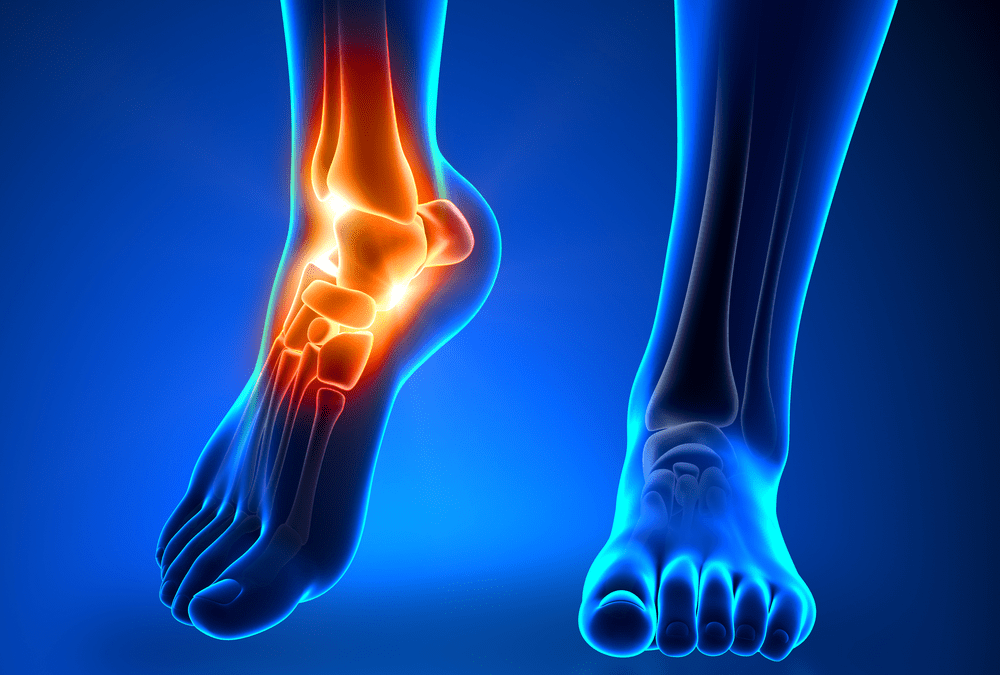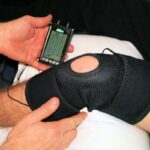Ankle pain is both frustrating and invasive. It can keep you from the activities you love, respond poorly to OTC pain relievers, and even prevent you from sleeping at night. Fortunately, plenty of treatment options are available to get you moving again and restore a sense of normalcy.
How Can You Get Rid of Ankle Pain?
Ankle pain is tricky. Many times, it appears out of nowhere with seemingly no cause. Other times, it’s a direct result of an injury and can lay you low for an extended time. Even the way this pain is experienced can vary wildly; it may be a throb, ache, burning sensation, or any combination therein. It can also radiate up the leg or stay concentrated in one spot, and the pain may be excruciating one day but then ease ever so slightly the next.
The goals of treatment are to manage these evasive symptoms so you can get back to living. When possible, we also strive to correct the root cause. We accomplish these tasks by presenting patients with several different treatment options that incorporate a range of techniques.
Injection-Based Therapy
By injecting health-promoting substances into targeted areas, we bypass the gastrointestinal tract to allow more immediate absorption in the body. These injections are placed into damaged or inflamed tissues and, as they take effect, increase mobility and relieve pain. Many times, injection-based therapy is used in combination with another treatment; this multi-faceted approach helps you recover more quickly.
Examples of this therapy include trigger point injections and facet injections. With the former, a small needle is used to deliver mild steroids into targeted nerves or muscles – the pain trigger points. A facet injection, likewise, relieves pain caused by inflammation. A needle is again guided into a specific spot; in this case, it’s the joint itself where a steroid is then administered.
What to Expect
For many patients, injection-based therapy provides long-term symptom relief. Although the results are not permanent, they allow you to move in a more normalized manner to strengthen muscles, regain balance, and improve flexibility. These activities are essential to restoring joint health.
Platelet-Rich Plasma (PRP)
This treatment is backed by a number of studies and proven to be both safe and successful. It uses a sample of your own blood that gets placed into a centrifuge. This separates platelets and plasma from red and white blood cells (although important, we don’t need those cells for this therapy). The goal is to achieve a concentration of platelets up to five times greater than that of traditional blood, which we then re-inject into a targeted spot.
Platelets contain a variety of growth factors that support tissue healing and regeneration. Thanks to these mechanisms, PRP can repair:
- Pulled muscles
- Torn ligaments
- Injured tendons
A Regenerative Therapy
Growth factors work so effectively because they attract stem cells, raw materials that develop into cells the body needs. This allows the formation of new cartilage and fibers for an overall stronger, healthier joint. Again, this allows you to move with greater ease to reduce swelling and build muscle. Because of its regenerative abilities, PRP can significantly ease the symptoms of mild arthritis and tendonitis.
Physical Therapy
The goal of physical therapy is to help patients improve or regain strength and mobility. We’ll start with a complete examination that allows us to craft a treatment plan framed by your individual needs. We’ll then incorporate both active and passive modalities to target the source of your ankle pain. We may, for instance, guide you through stretches, exercises, and hot and cold treatments to build muscle and relieve inflammation.
Chiropractic Care
Chiropractic care can be very useful in reducing pain without prescription medications. This in and of itself appeals to patients, but additional benefits of regular adjustments include:
- Increased mobility
- Greater flexibility
- Improved stability
How do adjustments work? First and foremost, they facilitate a strong blood flow to give tissues the nutrients they need. This can speed healing and reduce the chances of re-injury. Adjustments also realign bones, tendons, and ligaments so they work as designed. Many times, an ankle injury knocks these parts out of alignment; simply adjusting them can relieve pain and improve range of motion.
Bracing
After reviewing your ankle, one of our physical therapists may suggest you wear a brace to provide stabilization throughout the healing process. These recommendations are especially common for people who engage in sports and activities that demand rapid lateral movements.
To understand how a brace helps, we need to explain the ankle is designed so that internal components support and protect the joint. These supports – which include muscles, tendons, and ligaments – link the foot and hip to encourage optimal performance. When one of these components becomes damaged, however, the ankle may need external support to reduce motion, ease pain, and increase awareness of the joint’s physical position.
A Quick Note
We’ll likely recommend you wear your brace at all times, including with shoes, which means we’ll provide guidance regarding proper fit. Keep in mind bracing can reduce the stress placed on your foot to promote faster healing.
Common Causes of Pain
We mentioned earlier that ankle pain can be attributed to any number of causes. The most common is a sprain, in which ligaments tear or get overstretched. Many people think only athletes are at risk for sprains, but these can happen to anyone at any time, whether stepping hard off a ladder or rolling your ankle over uneven terrain. These movements can also damage tendons and cartilage.
A sprain requires rest to heal, which many people skip because life doesn’t permit time away from work, family, and home. This is why months after an initial injury, many patients continue to experience pain. Pain can also be caused by:
- Blocked blood vessels
- Nerve damage or injury
- Arthritis, especially osteoarthritis
- Gout
- Infection in the joint
Arthritis
Arthritis describes joint inflammation and exists in many different forms. Osteoarthritis (OA), also known as wear and tear arthritis, is the most common. It’s a chronic condition caused by cartilage breakdown, in which bones rub together and cause pain, stiffness, and movement loss. When OA is the culprit of your pain, discomfort is greatest where the ankle and shinbone meet.
Gout
This is another form of arthritis that strikes when uric acid builds in the bloodstream and causes needle-shaped crystals to form. The crystals lodge within body tissues, including joints, and generate sharp pain. Pain can linger for many weeks, and ongoing attacks tend to last longer and affect more joints.
When to See a Doctor
The ankle is a joint that many people think can be treated at home. Sometimes this is true, but other times, the pain persists despite your best efforts to apply ice, elevate your leg, and even rest as much as possible. You know it’s time to see a doctor when you continue to experience bruising, swelling, or pain without improvement after several days.
If you feel you’ve been struggling with a chronic ankle condition and don’t know how to correct it, we can help. Our pain management programs are designed to give you the tools, support, and treatments necessary for an active lifestyle. We’ll work to identify your pain source and craft a custom treatment plan based on our findings. Schedule your consultation today by calling B3 Medical in Wesley Chapel, Tampa, and Riverview, FL.



























